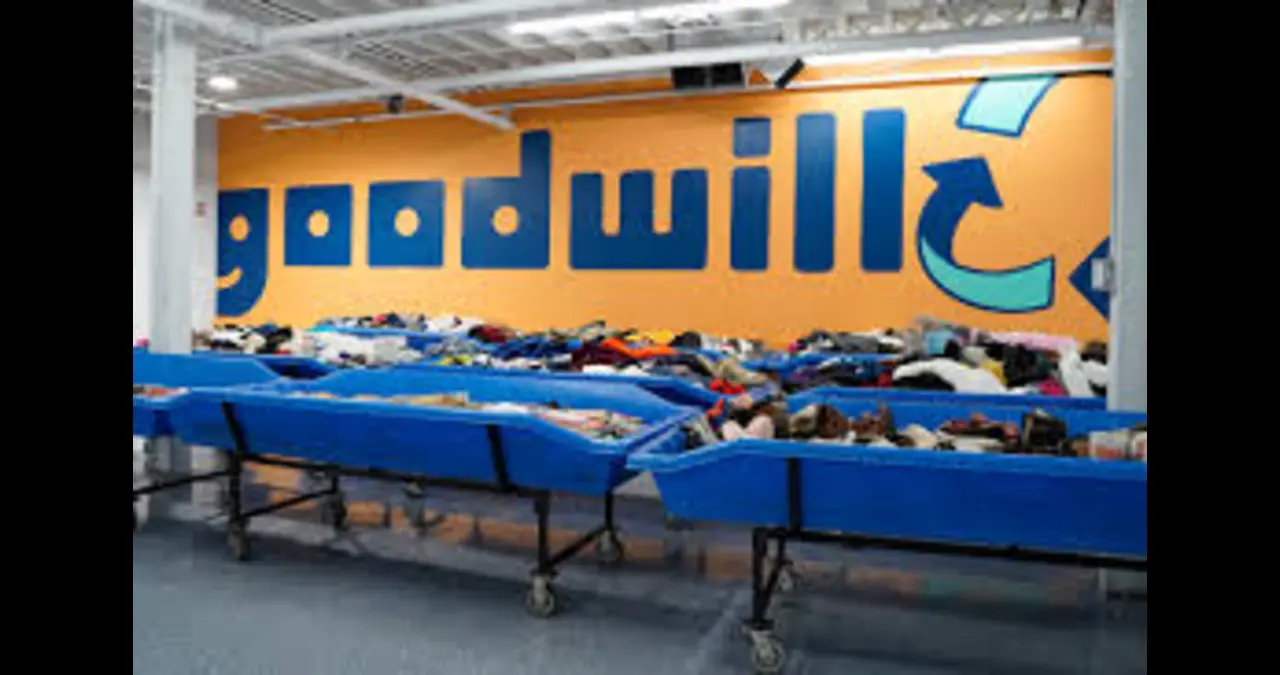Good Will Bins If you’ve ever heard someone say, “I found this at the bins!” and looked confused, you’re not alone. Goodwill Bins, also known as Goodwill Outlet stores, are the ultimate playground for thrifters, resellers, and bargain hunters alike. Unlike traditional Goodwill retail stores, the bins are where unsold items go for one final shot at being sold before they are recycled or disposed of. That may sound a little grim, but don’t be fooled. This is where the magic happens.
The moment you step into a Good Will Bins location, you’ll quickly realize it’s not your typical shopping experience. It’s a little chaotic, a bit unpolished, and addicting. It’s a place where patience pays off, and with the right strategy, you can walk out with hidden gems that cost you pennies on the dollar. Whether you’re looking for vintage clothes, rare books, quirky home decor, or something you never even knew you needed, the bins might just become your new favorite place.
Let’s dig into what makes Good Will Bins so special, how to navigate them like a pro, and why this quirky corner of the thrifting world has developed such a loyal following.
What Are Good Will Bins?
Goodwill Bins are essentially the last stop for unsold merchandise from regular Goodwill stores. Items are dumped into large blue rolling bins that you dig through by hand. Instead of being priced individually as they would be at a standard thrift store, items at the bins are sold by the pound. Yep, you heard that right—you pay based on how much your haul weighs.
This pay-by-the-pound model means you can walk away with bags of clothing, books, or household items for next to nothing. It’s perfect for resellers who are hunting for items to flip, college students decorating on a dime, or just anyone who loves the thrill of the hunt. The bins are restocked frequently throughout the day, which adds to the excitement—you never know when the next cart might hold your next treasure.
The environment is more warehouse than boutique, and that’s part of the appeal. You’ll often see seasoned “bin hunters” wearing gloves and moving with a sense of urgency as new bins roll out. It might seem intense at first, but after your first great find, you’ll get why people come back again and again.
Why People Love Shopping at Goodwill Bins
There’s something deeply satisfying about unearthing a valuable item among a pile of overlooked donations. The bins are unpredictable, but that’s what makes them so enticing. Each visit feels like a fresh opportunity to find something amazing. Whether it’s a designer jacket, a rare vinyl record, or a piece of vintage Pyrex, the bins have a way of delivering the unexpected.
Shopping at Goodwill Bins is also incredibly economical. With the low prices, you can experiment with your style or try out new home decor ideas without worrying about breaking the bank. If something doesn’t work out, you haven’t lost much. And if you’re crafty or love DIY projects, the bins are a treasure trove of raw materials—old clothes can become patchwork quilts, books can become art, and random knick-knacks can turn into eclectic centerpieces.
The community aspect is another reason people keep coming back. Over time, regulars tend to get to know each other. There’s a shared understanding among bin shoppers that makes the experience more enjoyable. Sure, there’s competition, but there’s also camaraderie. People swap tips, share good finds, and celebrate each other’s scores.
How to Navigate the Bins Like a Pro
First things first: dress for the experience. This isn’t the place for fashion statements. Comfortable clothes, closed-toe shoes, and maybe even gloves are your best bet. You’re going to be digging through a lot of stuff, and things can get messy. Think of it like a scavenger hunt in a warehouse.
Next, bring reusable bags or even a collapsible cart. While most locations offer plastic bags, having your gear makes sorting and carrying your haul a lot easier. And speaking of sorting—always check your items before purchasing. Bins aren’t curated like regular stores, so you might find things with stains, holes, or missing pieces. That said, some people see these flaws as opportunities for creativity.
Another tip: get familiar with the rotation system. Most bins operate on a timed rotation, where new carts of items are rolled out throughout the day. Regulars often know when these rotations happen, and they’ll position themselves for the best access. If you want the best finds, it’s worth learning the timing.
Patience and persistence are key. Not every trip Good Will Bins yield gold, but consistency usually pays off. Over time, you’ll develop an eye for spotting quality items quickly, and your ability to sift through the clutter will sharpen.

What You Can Find at the Good Will Bins
The short answer? Just about anything. But some categories pop up more frequently than others, and each has its appeal.
Clothing is by far the most common category. You’ll find everything from fast fashion to high-end designer pieces. Vintage lovers, in particular, thrive in the bins. Old denim, band tees, and retro outerwear often show up, and if you know what to look for, you can find serious gems. Since everything is sold by weight, lightweight items like shirts and dresses are especially cheap.
Books are another staple. From children’s books to coffee table hardcovers, the selection is vast and varied. Educators, homeschoolers, and avid readers can find huge value here. Vinyl records, DVDs, and CDs occasionally make appearances, too, and sometimes you’ll even stumble upon rare collectibles.
Housewares, electronics, shoes, and bags are all fair game as well. While these items can be hit or miss in terms of condition, a little effort goes a long way. A quick polish or a minor repair can transform a discarded item into something beautiful and useful. And for DIYers, broken items can still be goldmines for parts or upcycling.
Tips for First-Time Bin Shoppers
If you’re heading to the bins for the first time, manage your expectations. It’s not going to be neat or perfectly organized. Go in with an open mind, a sense of adventure, and a good amount of patience.
Start by giving yourself a time limit so you don’t get overwhelmed. The chaos can be fun, but it’s also easy to lose track of time. Bring hand sanitizer, stay hydrated, and don’t hesitate to take breaks. If you get tired, step back, reevaluate your finds, and maybe go in for another round.
Don’t be afraid to ask questions. The staff are usually pretty friendly, and regulars can offer a wealth of tips. Learning from others is part of the bin’s experience. Also, pay attention to signs around the store that explain pricing and policies. Some bins weigh different types of items separately (like books vs. clothing), so knowing the rules can help you avoid surprises at checkout.
Lastly, always trust your gut. If something catches your eye, grab it. If you change your mind, you can always put it back before checking out. The bins move fast, and hesitation can mean losing out on a great find.
The Reselling Game: Turning Bins Finds into Profit
One of the biggest draws of Good Will Bins is the potential for reselling. With such low costs, the profit margins can be pretty high if you know what to look for. Many successful resellers source inventory from the bins and flip it on platforms like eBay, Poshmark, Mercari, or Facebook Marketplace.
To do this successfully, you need to develop an eye for quality and market trends. Pay attention to brand names, fabric types, and item conditions. Use your phone to look up items you’re unsure about, and start small. Over time, you’ll build up knowledge about what sells well and what doesn’t.
Some categories to focus on include vintage clothing, designer labels, electronics, and unique home decor. You’ll occasionally find high-ticket items, but most of your profit will come from volume. The bins make that volume possible since you can get a lot for very little.
Remember to factor in your time, cleaning, and shipping costs when pricing your items. And keep it fun—reselling shouldn’t feel like a grind. If you stay curious and keep learning, it can be both profitable and enjoyable.
Sustainability and the Bins: Doing Good While You Shop
One of the most underrated aspects of shopping at Goodwill Bins is the positive environmental impact. By buying secondhand, you’re giving items a second life and keeping them out of landfills. That alone is a huge win in a world drowning in fast fashion and disposable goods.
Every purchase at the bins contributes to a more sustainable lifestyle. You’re not just saving money; you’re actively reducing waste and supporting a circular economy. It’s a small but meaningful way to make your consumption habits more eco-friendly.
Goodwill also reinvests revenue into job training programs, employment services, and community outreach. So, your shopping helps fund programs that uplift others. It’s a win-win-win—good for your wallet, good for the planet, and good for your community.
Conclusion: The Magic of the Bins
Good Will Bins may not be glamorous, but they’re undeniably special. They offer a unique shopping experience that blends adventure, savings, creativity and even a bit of community spirit. Whether you’re a hardcore thrifter, a budding reseller, or just curious about what all the fuss is about, there’s something at the bins for everyone.
If you haven’t visited your local bins yet, it might be time to go treasure hunting. Bring an open mind, dig deep, and see what you uncover. Because you never know—your next favorite item might be waiting in the bins, just a few dollars and a little effort away.




